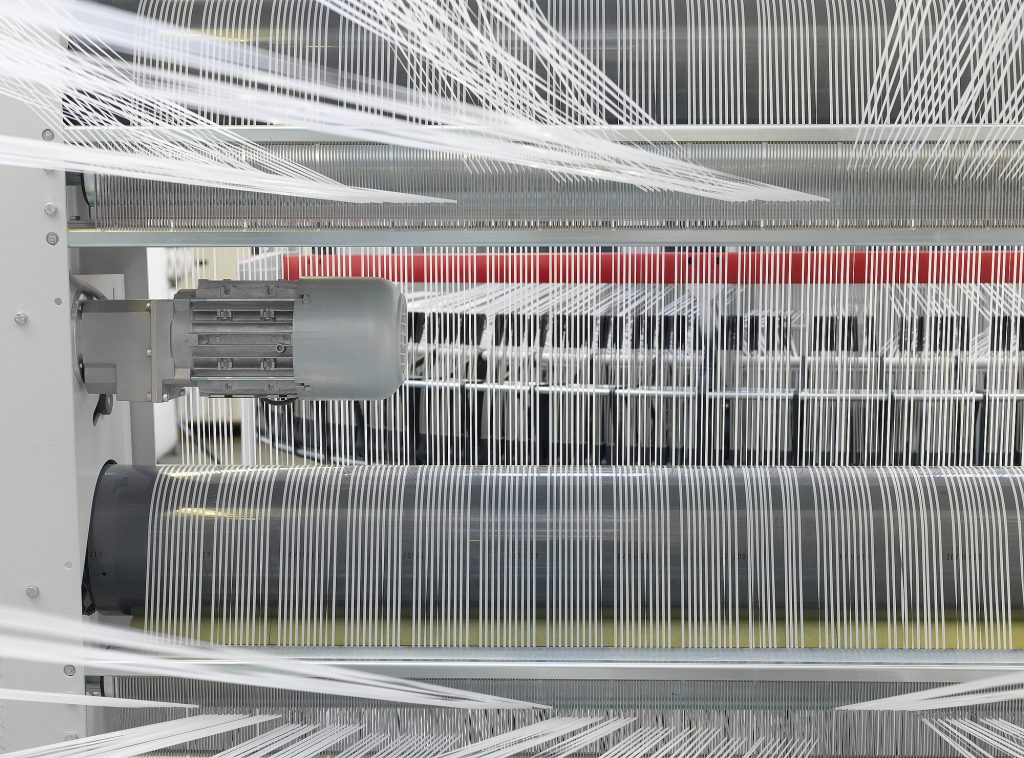
Ray, CEO of VidePak, gestures toward a production line during a facility tour:
“Poly-paper bags aren’t just packaging—they’re retail revolution enablers. Their block-bottom stability and valve designs reduce spillage by 90%, while our solar-powered production cuts carbon footprints by 25%. At VidePak, we merge engineering precision with ESG-driven ethics to redefine sustainable logistics.”
1. Introduction
Poly-paper bags—hybrid solutions combining polypropylene (PP) durability and paper-like aesthetics—have emerged as critical assets in modern retail, balancing functionality, sustainability, and brand appeal. VidePak, a global leader with $80 million annual revenue and 526 employees, exemplifies innovation in this niche. Equipped with 100+ Starlinger circular looms and a 2 MW rooftop solar system, the company produces over 20 million poly-paper bags annually for clients like Unilever and Walmart. This report explores structural innovations, ESG alignment, and market-specific adaptability that position these bags as retail industry benchmarks.
2. Design Innovations: Enhancing Logistics Efficiency
2.1 Valve Designs for Precision Dispensing
Pasted valve systems enable controlled pouring, critical for granular products like coffee beans and pet food:
- Laser-Cut Tolerance: ±0.2 mm valve sleeves prevent particle leakage <0.1% (ISO 21898).
- Anti-Static Liners: Carbon-black-free PP reduces dust adhesion by 70%, complying with FDA 21 CFR 177.1520.
Case Study: A 2024 trial with a premium coffee brand showed VidePak’s valve bags reduced in-store waste by 40% during restocking.
2.2 Block-Bottom Structural Integrity
Square-base designs optimize stacking and transport:
| Parameter | VidePak Standard | Industry Average |
|---|---|---|
| Load Capacity | 1,500 kg (ISO 2233) | 1,000 kg |
| Stack Stability | 50% higher vs. round-bottom | N/A |
| Pallet Utilization | 20% increase | 10% increase |
A German supermarket chain reported 30% faster shelf restocking using VidePak’s block-bottom bags.
3. Sustainability and ESG Integration
3.1 Solar-Powered Production
- Energy Output: 2,800 MWh annually, covering 65% of factory needs.
- Carbon Reduction: 320 tons CO2/year offset, equivalent to planting 7,400 trees.
3.2 Circular Economy Practices
- Material Recovery: 95% PP recycling via pyrolysis, aligning with EU 2030 targets.
- Waste Reduction: Starlinger’s ultrasonic welding cuts adhesive use by 40% versus stitching.
3.3 Social Responsibility
- Labor Welfare: Scholarships for 120+ children of low-income workers in Southeast Asian facilities.
- 5S Management: Lean workflows reduced workplace accidents by 40% in 2023.
4. Technical Excellence: Starlinger-Driven Production
VidePak’s integration of Starlinger technology ensures unmatched quality:
| Process | Starlinger Innovation | Quality Impact |
|---|---|---|
| Extrusion | PID-controlled temperature ±1°C | MFI variance <0.5%, ensuring uniform strength |
| Lamination | 20 m/min speed with 50 μm LDPE coating | 15,000 mm hydrostatic head for moisture resistance |
| Printing | 8-color Pantone® flexography | ΔE <1.5 color accuracy for brand consistency |
Case Study: A U.S. pet food brand achieved 25% cost savings using VidePak’s automated FFS (Form-Fill-Seal) lines at 200 bags/minute.
5. Market Applications and Competitive Edge
5.1 Food and Beverage
- Moisture Control: LDPE liners maintain <8% humidity for organic flour, extending shelf life by 30%.
- Custom Branding: Full-surface prints increase shelf visibility by 40% (Nielsen 2024).
5.2 E-Commerce and Bulk Retail
- Tear Resistance: 35 MPa tensile strength (machine direction) withstands 1.5-ton compression.
- Recyclability: 98% PP recovery aligns with Amazon’s Climate Pledge Friendly certification.
6. FAQs: Addressing Retailer Concerns
Q1: How do poly-paper bags compare to traditional plastic in cost?
A: While 15% pricier upfront, they reduce long-term costs via 30% lower transport damage and 25% lighter weight.
Q2: Are these bags freezer-safe?
A: Yes. PP blended with 5% EVA retains flexibility at -20°C, ideal for frozen goods.
Q3: What certifications ensure food safety?
A: FDA 21 CFR 177.1520, EU 10/2011, and ISO 22000, with ≤50 ppm heavy metal thresholds.
7. Conclusion
Poly-paper bags epitomize the synergy of retail functionality and ecological stewardship. By leveraging valve precision, block-bottom engineering, and solar-driven ESG practices, VidePak empowers brands to meet modern consumer demands. As Ray concludes, “In retail, every bag isn’t just a container—it’s a commitment to efficiency, ethics, and excellence.”
Explore our innovations in valve design technology and sustainable logistics solutions.